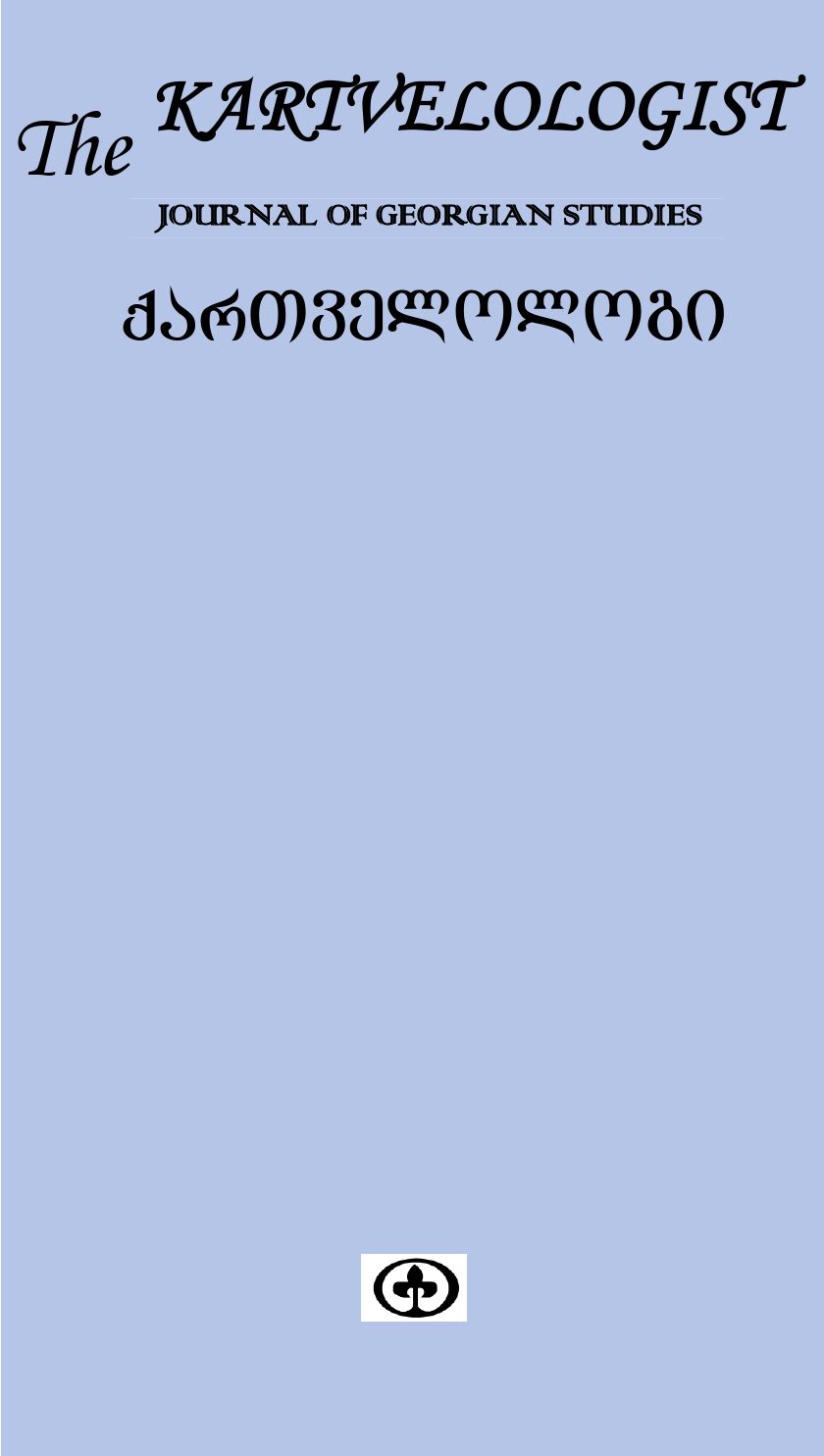Towards Understanding Tmesis in the Line of The Knight in the Panther’s Skin
Keywords:
The line of The Knight in the Panther’s Skin;, Tmesis, WorldviewAbstract
What captures our attention is one of the famous sections of The Knight
in the Panther’s Skin, the Davar episode, the final line of the stanza which deals
with the scene depicting the suicide committed by King Parsadan’s sister: [“She
struck herself with a knife, died (mo-ca-k’vda), fell in a stream of blood”]. In our
opinion, this instance of tmesis is one of the constituents of the poet’s worldview,
declaring his civic stance. Therefore, in this case, tmesis as a literary
embellishment should be understood merely as an empirical fact. It is less
debatable that splitting a verb, essentially serves as a tool for cultivating a literary
domain of a language. Consequently, the tmesis of verbal forms seems to be a
literary development; thus, it must not have emerged from a layer of a spoken
language.
As for this particular line in The Knight in the Panther’s Skin, it is closely linked
with the preceding lines [“Someone--who knows (vinca icis) who? – who heard
(visca esma) this wrath of the king / told it to Davar the Kadj, who knows even
heaven (caca is) by her sorcery”], through the poetic rhyme and the repetition as
a literary device, which allow us to understand the homonymous nature of the -
[m]ca particle. The c phoneme under discussion seems to be specifically selected
and its ideogrammic character is suggested by the letter name “can”. It is a fact
that in alliteratively used c, Rustaveli’s creative-literary vision is striving towards
heaven [”caca icis” (“knows even heaven”)]. It takes the form of an upward
vertical, implying Davar’s yearning for or embracing the heaven above.
More specifically, what do we deal with when Rustaveli employs ca in the
final line of Davar’s suicide scene [“mo-ca-k’vda”], inserting it into the verbal
tmesis with his inherent authenticity? It seems unlikely that the poet intends to
emphasize Davar’s death alone [“mo-ca-k’vda” ― “indeed died”]. Rustaveli’s
message must be more profound and concealed through poetry. We believe the
soul of the woman who perceived heaven is drawn towards heaven after physical
death; thus, as we see it, it returns to heaven [*mo-cad-k’vdeba (dies departing
towards heaven)]. The wisdom arrived from heaven must be taken by the heaven
itself; such interrelationship is arc-shaped just the same way as the c grapheme
in the Asomtavruli and Mkhedruli alphabets. We believe such an interpretation of
Davar's episode is constructing one of the significant Rustvelian concepts of the
world.


